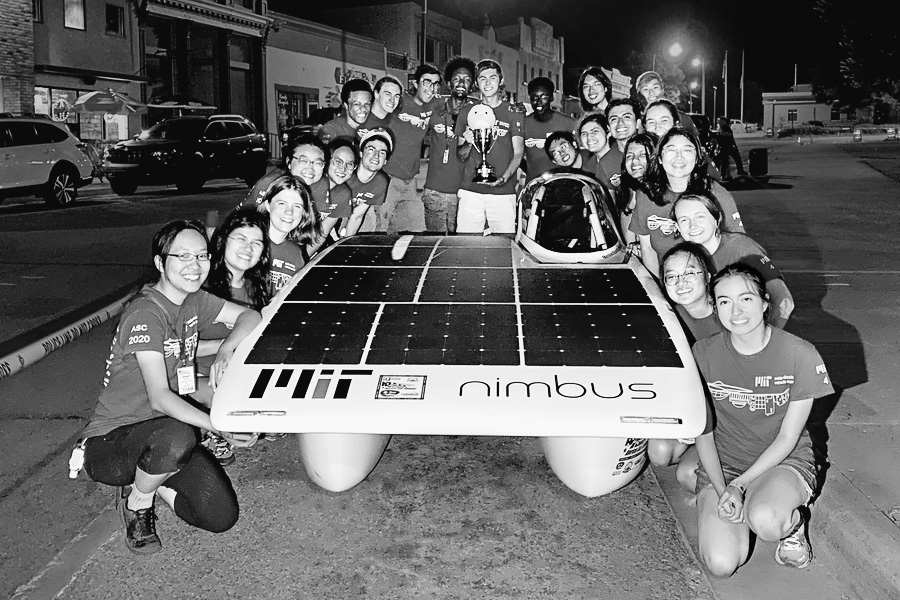A win for MIT’s solar car
The student-designed Nimbus triumphed in the 2021 American Solar Challenge.
Nimbus, the car designed by the MIT Solar Electric Vehicle Team, won its category at the 2021 American Solar Challenge (ASC), traveling 1,109 miles at an average speed of 38.4 miles per hour in a five-day race that ended August 7.

In 2021, instead of being timed as usual, the race was based on distance traveled. Each team followed the same route, from Independence, Missouri, to Las Vegas, New Mexico. But teams could drive additional miles within each of the three stages—if their battery had the juice. Traveling with seven support vehicles, Nimbus beat eight other single-occupancy cars, surpassing the runner-up by over 100 miles.
“It’s still a little surreal,” says Aditya Mehrotra, a senior in electrical engineering and computer science, who was the team captain last year. The team had spent three years designing and testing Nimbus, practicing a series of qualifying challenges called “scrutineering” and completing what’s known as the “shakedown”—“you drive the car around the track and you basically see what falls off, and then you know what you need to fix,” Mehrotra explains.
Then, two weeks before the ASC, they competed in the Formula Sun Grand Prix in Topeka, Kansas, where team member Cameron Kokesh tied for the fastest single lap around the track at three minutes and 19 seconds.
The team did encounter some problems on the route, such as a day with little sun when the car had to chug along at 15 miles per hour. And there was the time that the Kansas State Police pulled the entire caravan over. But team members say the car’s light weight, aerodynamic design, and reliability helped them prevail.
Nimbus is slated to race again next summer, and the team also hopes to design a multiple-occupancy vehicle for 2024.
Keep Reading
Most Popular
Large language models can do jaw-dropping things. But nobody knows exactly why.
And that's a problem. Figuring it out is one of the biggest scientific puzzles of our time and a crucial step towards controlling more powerful future models.
How scientists traced a mysterious covid case back to six toilets
When wastewater surveillance turns into a hunt for a single infected individual, the ethics get tricky.
The problem with plug-in hybrids? Their drivers.
Plug-in hybrids are often sold as a transition to EVs, but new data from Europe shows we’re still underestimating the emissions they produce.
Google DeepMind’s new generative model makes Super Mario–like games from scratch
Genie learns how to control games by watching hours and hours of video. It could help train next-gen robots too.
Stay connected
Get the latest updates from
MIT Technology Review
Discover special offers, top stories, upcoming events, and more.